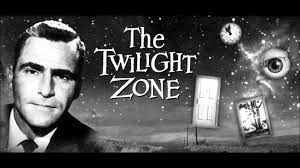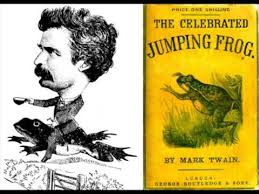
UNDATED – With the exception of people who are born organized neat freaks, we can all admit our rooms can get chaotic from time to time.
To the delight of parents, today is National Clean Your Room Day.

Shrimp fans all across the country come together today, to honor their love for the shellfish, commonly called the “fruit of the sea.” Shrimp are interesting characters, and some can even glow in the dark.
Elvis Presley even once sang a song about them, crooning, “If I should live to be ninety, I will never forget the little shrimp and the song he sang as he jumped into the net.”

In the United States, shrimp is eaten more than any other type of seafood, so of course, it deserves its own day – National Shrimp Day. Grill em, fry em or eat em cold. Try them on a sandwich, on a salad, or one by one in some delicious cocktail sauce. Whatever you do, take some time to celebrate.
Tuesday is National Third Shift Day is celebrated on the second Wednesday of May, on May 11 this year. We take the opportunity to celebrate and thank the people that work throughout the night to keep the communities safe while we sleep and continue business operations that are required to run 24 hours. As the majority of us work during the day, some people work through the night to maintain society’s emergency infrastructure and other services.
The modern concept of shift work became increasingly widespread during the industrial revolution, between 1760 and 1840. As America and Europe began to move towards new mechanical processes and techniques from hand-production methods, the iron-, steam-, and chemical industries saw increased profits and efficiencies. Not only were factory owners able to work more efficiently with their existing laborers, but they could also hire more non-skilled handcraft labor to work around the clock and increase production.

National Third Shift Day was founded by Jeff Corbett. He wanted to recognize the night-shift workers that keep our cities and businesses both safe and operational as we sleep. It is important to understand that night-shift work is not only applied to the manufacturing industry but also to other businesses and government infrastructures such as water, electricity, and hospitals.
We are grateful that there are people who dedicate their lives to such an unusual working lifestyle to serve, protect, and maintain society’s operations.
Tuesday is also National Twilight Zone Day. We are celebrating with more science fiction, horror, supernatural drama, and unexpected twists than you could shake a fifth-dimensional stick at. Widely considered one of the greatest television shows of all time, “The Twilight Zone” has led to a number of spin-offs and derivatives, including graphic novels, movies, radio series, board games, and more. On May 11 we can dive into the show’s 60-year history and what it has meant to viewers and fans across the globe.

The 1950s had seen an explosion in science-fiction-themed television and radio shows. But perhaps none has had a greater impact on popular culture than The Twilight Zone, which debuted in 1959.
The series was created by a young writer named Rod Serling. It delved into several different genres, including science-fiction, comedy, drama, and horror. Serling would often lean on his personal experiences in boxing, the military, and as an airplane pilot, as story ideas for the show. He also served as the narrator in each episode, acting as an almost omnipresent figure that was witnessing the events of The Twilight Zone.
After a five-year run, the show ended in 1964. It would remain dormant until 1983 when famed director Steven Spielberg helmed a movie adaptation of the original show. In 1985 it returned to television when CBS developed a reboot that would last for four years. Further reincarnations were developed in 2002 and 2019, following a similar structure to the original.
Over the years, “The Twilight Zone” inspired many science fiction shows and remains a fixture in modern pop culture to this day.
Wednesday is National Limerick Day and pays homage to the man who made the short poems widespread — Edward Lear. Lear was an English poet who is known for his nonsense-style, often writing with made-up words, telling tales of “Quangle-Wangles,” and “runcible spoons.” He wrote 212 limericks, most of which didn’t follow the specific rhyming rules of the style. Although the by definition limericks have five lines, Lear’s were often shown in three or four, to give space to his accompanying illustrations and drawings.
There was an Old Man with a beard
Who said, “It is just as I feared!
Two Owls and a Hen,
Four Larks and a Wren,
Have all built their nests in my beard!”
The origin of the poem’s name is a bit disputed, but most people believe it comes from the Irish city of Limerick. With just fine lines, the first two rhyming with the fifth line, and third and fourth lines rhyming together, limericks are quick, funny poems.
There was a young lady of Lynn,
Who was so uncommonly thin
That when she essayed
To drink lemonade
She slipped through the straw and fell in.
Although popularized by Lear, limericks first started to emerge in England in the 18th century. Most limericks begin by describing a person and place, and then the rest of the lines describe that person’s actions. Limericks can be vulgar or crude, and are often inappropriate. Lear liked it that way – he considered “clean” limericks to be average at best. More recent limericks have turned toward current events and social issues.

They’re overworked and underappreciated, National Receptionists Day is also Wednesday and is our chance to show these men and women that we truly know who runs the office.
Receptionists have countless responsibilities depending on where they work. But they often act as the boss’ gatekeeper – so make sure you treat them well.
On Thursday grab a fork and a napkin, because it’s Apple Pie Day.
Apple pie has been around since the Middle Ages. A Dutch cookbook dated 1514 lists a recipe for Appeltaerten. It called for a standard pie crust, slices of soft seedless apples, and a few tasty spices – specifically cardamom, ginger, cinnamon, nutmeg, clove, mace, and sugar – all cooked up in a traditional Dutch oven. The English also had their version of apple pie, which dates back to the time of Chaucer. The English version also suggests adding figs, raisins, and pears to the apple-and-spice mixture. In Sweden, apple crumble was the gold standard. Traditional Swedish apple crumble requires breadcrumbs or rolled oats instead of pastry, and is served up with custard or ice cream. In France, apple pie is served upside-down as a Tarte Tatin.

The French also caramelized their apples, an innovation that added a whole new dynamic to the flavor. They were also the ones who decided to add cheese to their pies, which actually makes for a surprisingly delicious treat. In the 17th century, apple pie was finally brought to the American colonies. Over time, apple trees, which were not native to the Americas, began to grow, which made baking much easier. Now, apple pie has become an indelible part of the American identity, to the extent that apple pie is considered one of the most American things in the world.
National Frog Jumping Day is also celebrated on Thursday. While the name itself may seem rather vague, its origins come from Mark Twain’s first published short story about a betting man and his pet frog.

Did you know that there are approximately 7,300 species of frogs around the world and the most colorful ones are the most poisonous?
National Frog Jumping Day is important because it brings literature to life, as well as brings awareness to different kinds of frogs and their impact within our ecosystem.
Friday is the end of the week and what better way to celebrate than with National Dance Like A Chicken Day. The day is about reliving fond memories of busting out the iconic Chicken Dance.
Whether it was in elementary school or at an event last week, everyone has done the Chicken Dance. While the accompanying oompah song we now know as The Chicken Dance Song originated in Switzerland in the 1950s, it wasn’t until the 1970s that Americans caught on and the song took off on the charts.
Pop on the song and dance with the kids in your life to the Chicken Dance today.
Saturday is Armed Forces Day is a special holiday for people all over the world to come together and thank the men and women of the United States Armed Forces.

First conceived by President Harry S. Truman, the holiday was established in 1949. The creation of a single-day celebration for all five branches of the United States military made sense due to its recent unification under the Department of Defense. Today, Armed Forces Day is celebrated on the third Saturday of every May, this year falling on May 15.
Saturday is also National Chocolate Chip Day. Chocolate chips actually came after the chocolate chip cookie, and despite their ubiquity, are likely younger than your grandmother – they were first marketed in 1940. Legend has it that the chocolate chip cookie was a happy accident, born when the baker ran out of baker’s chocolate and opted for semi-sweet instead.

The recipe spread like wildfire, and after a few years of selling their semi-sweet chocolate bars with a chopping tool (for easy chunking of the bar), Nestlé went one step further by introducing chocolate “morsels” to the world.
Information, nationaltoday.com



